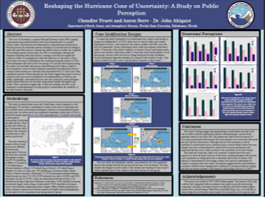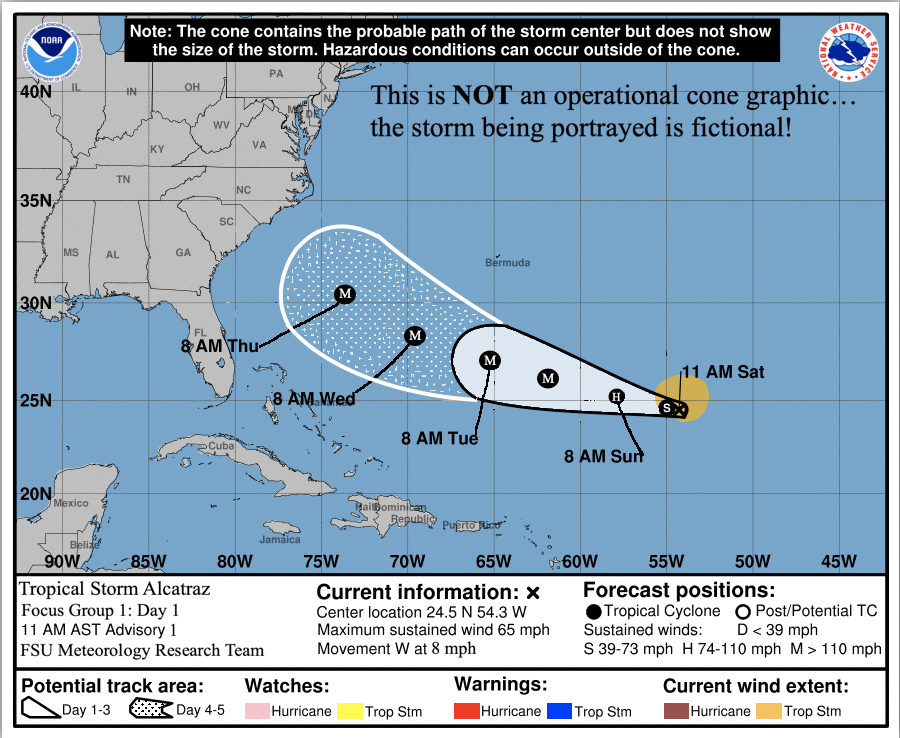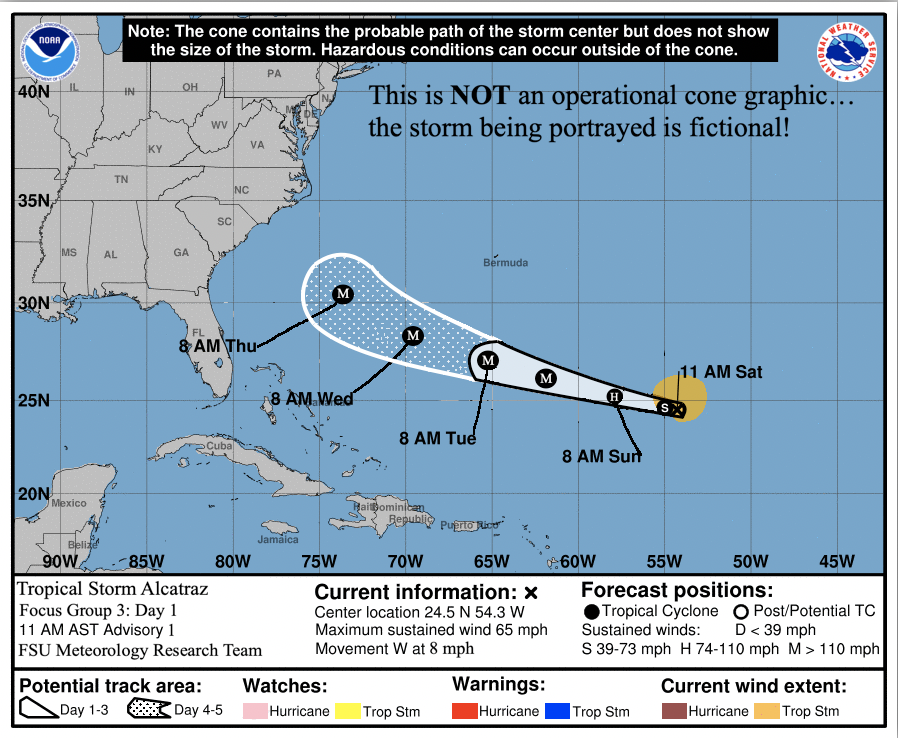President's Showcase
Chandler Pruett He/Him/His
Supervising Professor: Dr. Jon Ahlquist
Hailing from Charlotte, North Carolina, Chandler Pruett is an undergraduate Presidential Scholar seeking two degrees in Meteorology and Statistics. His interests in meteorology vary, but hurricanes continually grasp his interest. As a hurricane analyst for Risk Management Solutions, he studies these storms as they churn across open water, putting up massive gusts of wind and stirring the seas for hundreds of miles. However, once these storms aim for the coast, his concern shifts as he remembers the images of destruction caused by Hurricanes Harvey and Florence, just to name a couple. Having a secondary passion for emergency management and public safety, his eyes turn towards informing and preparing the locals, ensuring they are safe in the storm. This concern has steered his research interests, and it has guided him towards this project with the hope that better communication will yield less disaster and less lives claimed by a hurricane.
Abstract
The Cone of Uncertainty, a popular National Hurricane Center (NHC) graphic, communicates the possible deviations from the forecasted track of a tropical system’s center. The deviations are determined by using historical forecast errors from the previous five hurricane seasons, resulting in a cone that does not change in width with each NHC advisory. Because this behavior does not reflect the variability of forecasting tropical cyclone tracks, the NHC is considering a redesign that integrates model data with each advisory, creating a cone that can expand and contract in width. To investigate how clear this behavior is to the public, a focus group study involving 124 participants was conducted during the summer of 2022. These participants were split up into four groups of 31 people with one group using the current cone and three other groups using differing cone widths to analyze a storm simulation. In this five-day simulation, participants described their levels of concern at three locations as a fictional storm approached the U.S. East Coast. After a qualitative analysis of these descriptions, the results suggest that people’s levels of concern for the storm were not hindered by the implementation of various cone widths. Additionally, when asked how the cone was constructed, every participant already believed that the cone was built using current weather information and models. These conclusions suggest that, in their next redesign, the NHC could implement a model-dependent cone that properly communicates the variability of the track forecast to the public.






